Cereal grains are basically single-seeded fruits in which the starchy endosperm is the predominant portion (50-70%), whereas the genl1, the most nutritive part of the grain that contains proteins, lipids, minerals, and vitamins, constitutes a small part. The endosperm is surrounded by the bran that comprises the aleurone layer and other layers of highly compressed cells, nucellus, seed coat, and pericarp. In naked grains (e.g. wheat and maize), the pericarp protects the grain from fungal invasion and transfer of moisture. Grains such as barley and paddy are covered with husks or hulls comprising lemma and palea. The hull protects the grain from mechanical damage and against fungal and insect attack.
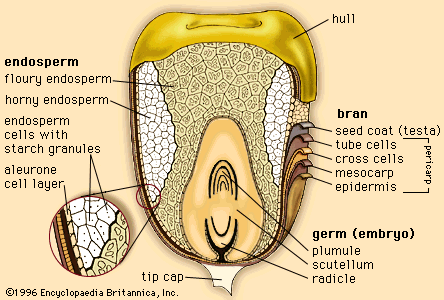 |
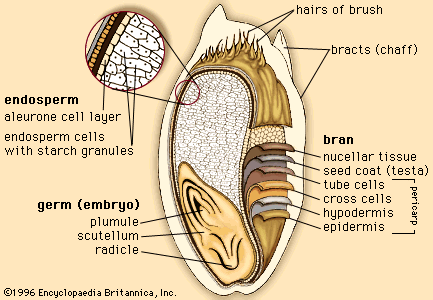 |
| Maize | Wheat |
The granular structure of the grains has many advantages for their handling and storage. It facilitates easy flow through pipes or conveyers, to pour or aspirate, or to fluidize. The interstitial spaces in grains allow air to be blown through the grain mass for removal of excess heat (cooling), moisture (aeration), and to change the composition of the surrounding air (controlled atmosphere storage). The intergranular air serves as an excellent insulation and is responsible for temperature gradients in grains in tall silos.
Grain, being a living organism, respires. This results in the oxidative breakdown of plant storage materials into carbon dioxide, water, and energy. The energy liberated during this aerobic respiration is utilized by the cells for metabolic processes, resulting in the release of heat.
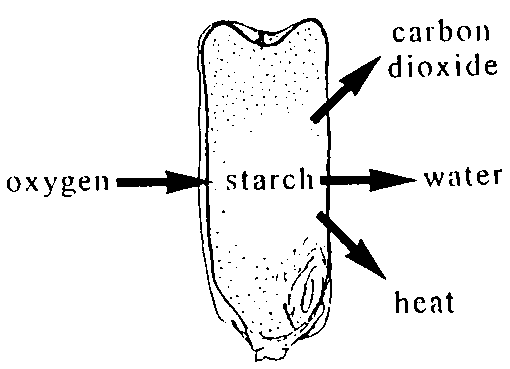
The water or moisture content is an important component of the grain and is the crucial factor affecting the storage of grain. The moisture content is taken into consideration during procurement and marketing. The growth and multiplication of insect pests and fungi, the major spoilage organisms of the grains, are dependent on the available water in the grain.
Grains are hygroscopic and gain or loose water, depending on the water vapor present in them and in ambient air to attain equilibrium. Once the equilibrium moisture content is reached the grain no longer absorbs moisture from its surrounding air. The equilibrium moisture content (ERH) values are different for various grains. For a specific grain, the values increase with increasing relative humidity and decrease slightly with increasing temperatures.
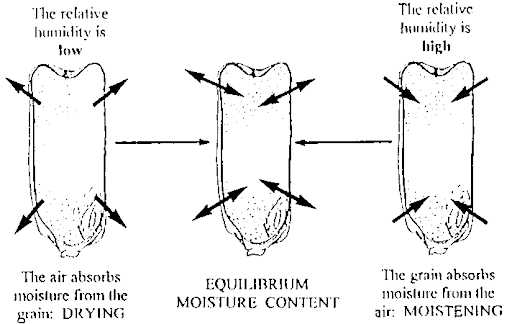
At the time of arrival to a storage site, grains contain dockage which includes broken grains, foreign materials, and dust. The presence of dockage is conducive for the development of insect pests and it impedes effective aeration of the grain in a silo or bin. Grain dust is composed of fine particles of 15- to 120-f.tm starch granules, bran flakes, or pieces of chaff formed by the abrasion of grains during handling. Beyond certain limits, the dusts form an explosive mixture with air in the presence of a spark.
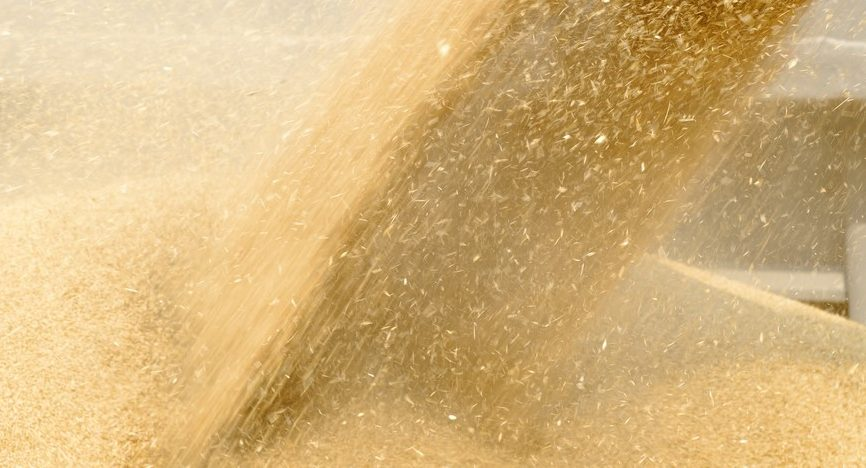 |
 |
Grain has low thermal conductivity and specific heat. Hence, in bulk storage, in the absence of forced air circulation, the heat produced by the metabolic processes of the grain (and grain pests) does not dissipate readily, resulting in "hot spots".
Variations in grain hardness between cereal grains and between cultivars of the same species (e.g. wheat) have been reported. Grain hardness is an important property, as it can influence the grain's ability to resist damage during handling and insect attack.
Bulk density or mass per hectolitre, i.e. weight of a given volume of grain including the voids, expressed as pounds (lb)/bushel in the United States and kilogram (kg)/hectolitre in most other countries, is a widely-used grain property in commercial contracts. Low bulk density means the grain is infested or infected, or that physiologically immature grains and impurities are present.
